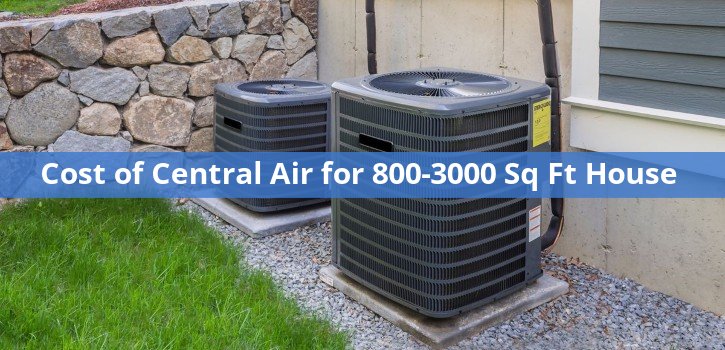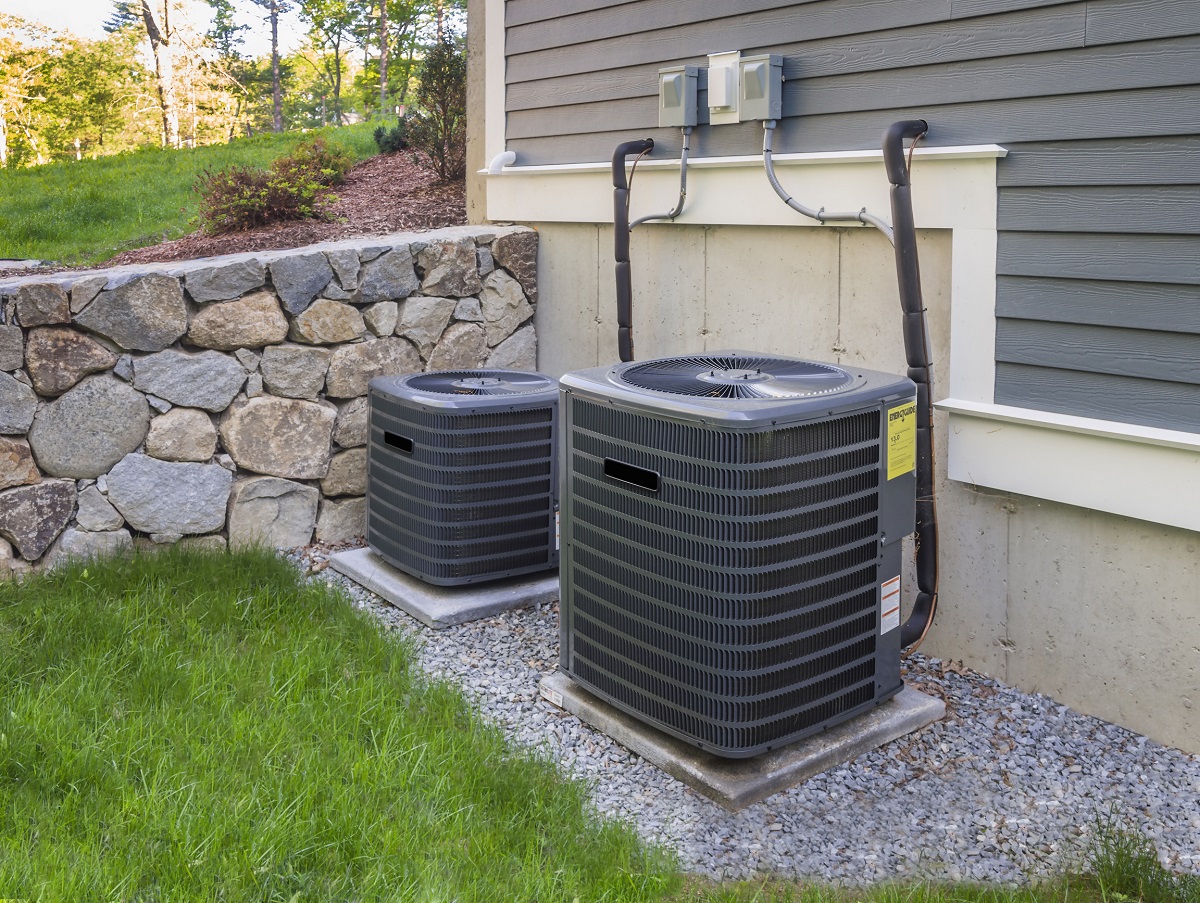Cost Of New Ac Unit For 2000 Sq Ft House

Cost of a New AC Unit for a 2000 Sq Ft House: A Homeowner's Guide
Is your AC unit struggling to keep your 2000 sq ft home cool? Are you facing ever-increasing repair bills? It might be time to consider a replacement. Understanding the costs associated with a new AC unit is crucial for budgeting and making informed decisions. This guide provides a comprehensive overview of the factors influencing the cost and what to expect when replacing your air conditioner.
Sizing is Key: Matching Your AC to Your Home
The first step in determining the cost is accurately sizing your new AC unit. An undersized unit will struggle to cool your home, while an oversized unit can lead to short cycling (frequent on/off cycles), which wastes energy and reduces the lifespan of the equipment. For a 2000 sq ft house, a 3 to 4 ton AC unit is generally recommended. However, several factors can influence this:
- Climate: Hotter climates require larger units.
- Insulation: Better insulation reduces the cooling load.
- Window Efficiency: Energy-efficient windows minimize heat gain.
- Sun Exposure: Homes with significant sun exposure may need a larger unit.
- Number of Occupants: More people generate more heat.
It's highly recommended to have a professional perform a Manual J load calculation. This calculation considers all these factors to determine the precise cooling requirements of your home. This will ensure you get the right size unit for optimal performance and energy efficiency.
Understanding the Cost Breakdown
The total cost of a new AC unit includes several components:
- The AC Unit Itself: This is the most significant expense. Prices vary based on the brand, SEER rating (Seasonal Energy Efficiency Ratio), and features.
- Installation Costs: Labor charges for removing the old unit, installing the new one, and connecting it to the ductwork and electrical system.
- Ductwork Modifications (If Necessary): Existing ductwork may need to be modified or replaced to accommodate the new unit.
- Electrical Work: Upgrading the electrical panel or wiring may be required to handle the new unit's power requirements.
- Permits and Inspections: Local building codes often require permits and inspections for AC installations.
- Refrigerant: The cost of the refrigerant used in the new unit.
Average Cost Estimates for a 2000 Sq Ft Home
Here’s a general estimate of the cost for a new AC unit installation in a 2000 sq ft home. Keep in mind these are averages and can vary based on location, brand, and contractor:
- 3-Ton AC Unit: $3,500 - $7,000 installed.
- 3.5-Ton AC Unit: $4,000 - $7,500 installed.
- 4-Ton AC Unit: $4,500 - $8,000 installed.
These prices typically include the cost of the unit, installation labor, and basic materials. More efficient units with higher SEER ratings will generally cost more upfront but can save you money on energy bills in the long run.
Factors Affecting the Price
Several factors can significantly influence the final cost of your AC installation:
- Brand: Well-known brands like Carrier, Trane, and Lennox often command higher prices than lesser-known brands.
- SEER Rating: Higher SEER ratings indicate greater energy efficiency. Units with SEER ratings of 16 or higher will generally cost more.
- Features: Advanced features like variable-speed compressors and smart thermostats can add to the cost.
- Contractor: Labor rates vary between contractors. Get multiple quotes to compare prices.
- Location: Installation costs can vary depending on your geographic location.
- Ductwork Condition: If your ductwork is old, damaged, or poorly designed, it may need to be repaired or replaced, adding to the overall cost.
DIY vs. Professional Installation: Know Your Limits
While some homeowners may be tempted to tackle AC installation as a DIY project, it's generally not recommended unless you have extensive experience in HVAC systems and electrical work. Improper installation can lead to:
- Reduced Efficiency: An improperly installed unit may not operate at its rated efficiency, costing you more in energy bills.
- Equipment Damage: Incorrect refrigerant charging or wiring can damage the unit.
- Safety Hazards: Electrical shock and refrigerant leaks are potential hazards.
- Voided Warranty: Most manufacturers require professional installation to maintain the warranty.
However, there are some simple DIY tasks you can perform, such as:
- Replacing Air Filters: Regularly changing your air filter is essential for maintaining your AC's performance.
- Cleaning the Outdoor Unit: Remove debris from around the outdoor unit to ensure proper airflow.
- Checking for Leaks in Ductwork: Seal any visible leaks in your ductwork with duct tape or sealant.
Safety Tip: Always turn off the power to the AC unit before performing any maintenance.
When to Call a Professional
It's crucial to call a qualified HVAC technician for any complex repairs or installations. Here are some signs that you need professional help:
- The AC unit is not cooling properly.
- The unit is making strange noises.
- There are unusual odors coming from the unit.
- The unit is leaking refrigerant.
- You suspect an electrical problem.
Choosing the Right AC Unit for Your Needs
When selecting a new AC unit, consider the following factors:
- SEER Rating: Choose a unit with a SEER rating that balances upfront cost with long-term energy savings. A SEER rating of 16 or higher is generally recommended for energy-conscious homeowners.
- Type of Unit: Consider a central AC unit, a ductless mini-split system, or a window unit depending on your needs and budget.
- Features: Look for features that enhance comfort and efficiency, such as variable-speed compressors and smart thermostats.
- Warranty: Choose a unit with a comprehensive warranty that covers parts and labor.
Negotiating the Best Price
Getting multiple quotes from different HVAC contractors is essential for negotiating the best price. When comparing quotes, be sure to consider:
- The brand and model of the AC unit.
- The SEER rating.
- The scope of work included (removal of old unit, installation, ductwork modifications, electrical work, permits, etc.).
- The warranty terms.
- The contractor's experience and reputation.
Don't be afraid to negotiate with contractors to get a better price. Ask about discounts, rebates, and financing options.
Financing Options and Rebates
Replacing an AC unit can be a significant expense. Fortunately, several financing options and rebates are available to help offset the cost:
- HVAC Financing: Many HVAC contractors offer financing options through third-party lenders.
- Home Equity Loans: You can use a home equity loan or line of credit to finance the purchase.
- Government Rebates: Check with your local utility company and state energy office for rebates on energy-efficient AC units.
- Federal Tax Credits: The federal government offers tax credits for certain energy-efficient home improvements.
Extending the Life of Your New AC Unit
Proper maintenance can significantly extend the life of your new AC unit and prevent costly repairs. Here are some tips:
- Change Air Filters Regularly: Dirty air filters restrict airflow and can damage the unit. Change them every 1-3 months, or more often if you have pets or allergies.
- Schedule Regular Maintenance: Have your AC unit inspected and serviced by a qualified technician at least once a year.
- Keep the Outdoor Unit Clean: Remove debris from around the outdoor unit to ensure proper airflow.
- Monitor Refrigerant Levels: Low refrigerant levels can indicate a leak, which needs to be repaired promptly.
- Use a Programmable Thermostat: A programmable thermostat can help you save energy by automatically adjusting the temperature when you're away or asleep.
Common AC Problems and Troubleshooting Tips
Here are some common AC problems and troubleshooting tips:
- AC Not Cooling: Check the thermostat settings, air filter, and circuit breaker.
- AC Blowing Warm Air: Check the refrigerant levels and condenser coils.
- AC Making Strange Noises: Investigate the source of the noise and call a technician if necessary.
- AC Leaking Water: Check the condensate drain line for clogs.
- AC Cycling On and Off Frequently: This could indicate an oversized unit or a problem with the thermostat.
Essential Tools for Basic AC Maintenance
Here's a list of tools you may need for basic AC maintenance:
- Screwdrivers (various sizes)
- Wrench Set
- Pliers
- Multimeter
- Air Filter
- Duct Tape or Sealant
- Vacuum Cleaner or Brush
By understanding the costs involved, carefully considering your needs, and performing regular maintenance, you can ensure that your new AC unit keeps your 2000 sq ft home cool and comfortable for years to come. Remember to consult with qualified professionals for accurate estimates and proper installation.










